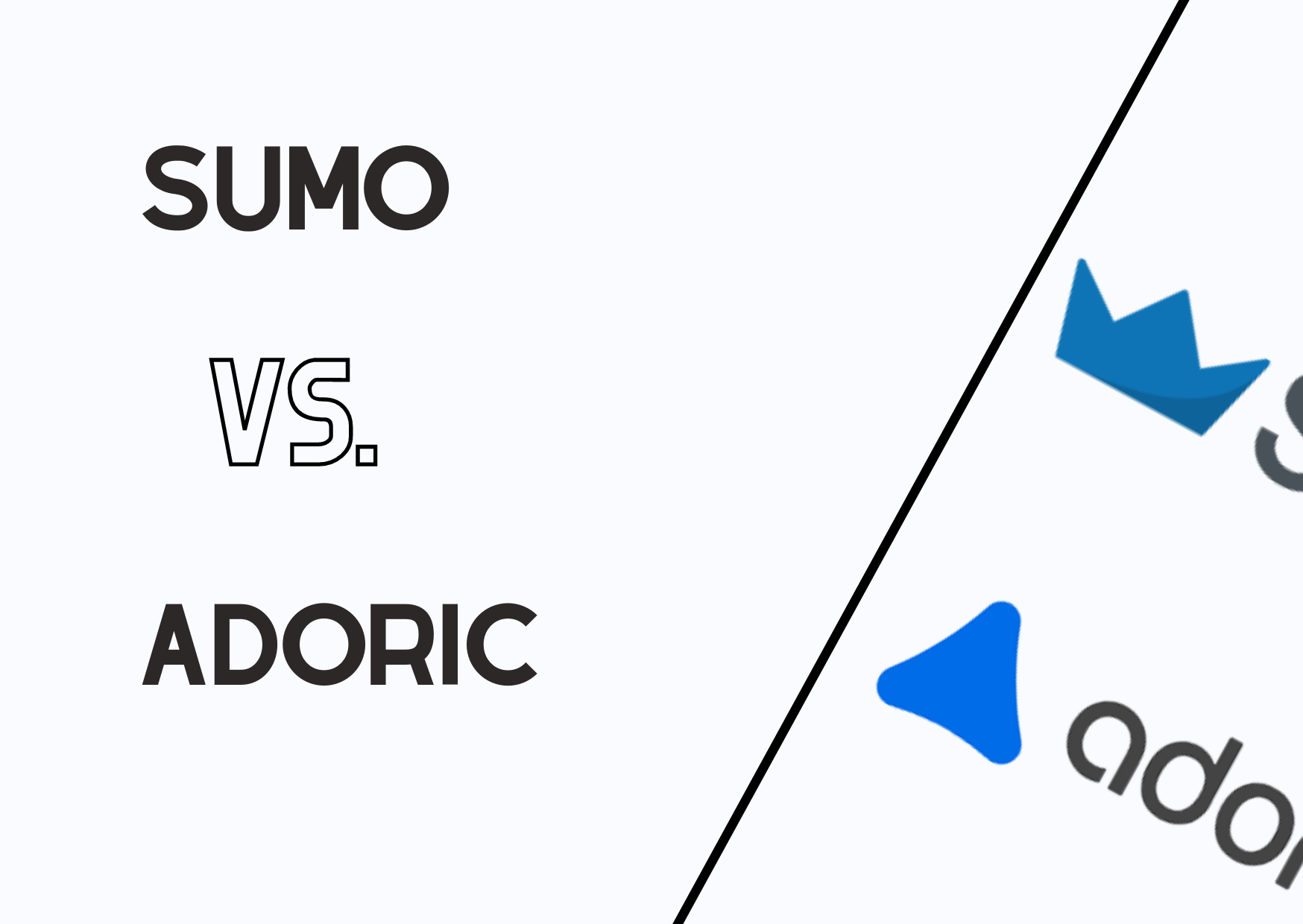As businesses look to expand their online presence and optimize their website's performance, two popular options for achieving this are Sumo and Adoric.
Both tools offer a wealth of features and capabilities, but they also have distinct differences.
Let's begin by exploring the similarities and unique offerings of both Sumo and Adoric to help you decide which one to choose for your business.

Similarities
As two of the leading tools in the website optimization space, Sumo and Adoric share a number of similarities.
Both platforms offer a variety of features to help businesses increase website conversions, such as A/B testing, lead generation forms, and heat maps.
Additionally, both Sumo and Adoric provide extensive integration options, making it easy to connect the platform to other tools in your marketing stack.
However, it's important to note that while both platforms share some similarities, they also have distinct differences that make them more suitable for different types of businesses and use cases. Keep reading and find out what they are.
Integrations
Sumo and Adoric are both popular conversion rate optimization tools that offer a wide range of integrations to help businesses streamline their marketing efforts.
Sumo, for instance, integrates with a wide range of popular platforms and services, such as WordPress, Shopify, Magento, BigCommerce, and more.
Sumo also integrates with email marketing services like Mailchimp, AWeber, and Constant Contact, as well as with analytics platforms like Google Analytics and Mixpanel.
On the other hand, Adoric also integrates with a variety of e-commerce platforms, including Shopify, Magento, BigCommerce, and WooCommerce.
Adoric also integrates with popular marketing and analytics tools such as Google Analytics, Mixpanel, and Facebook Pixel.
In summary, both Sumo and Adoric offer a comprehensive set of integrations that businesses can leverage to optimize their marketing efforts.
Features
One of the most notable differences between Sumo and Adoric is the scope of their functionality. Sumo offers a wider range of tools, including website pop-ups and forms, social sharing buttons, and analytics.
Adoric, on the other hand, is more focused on providing targeted on-site messaging and personalization features. This means that Sumo may be a better fit for businesses that want a broader set of tools to increase website conversions, while Adoric may be more suitable for businesses that want to personalize the customer experience and increase engagement.
Another key difference between the two platforms is their level of customization. Sumo offers a range of customizable templates and design options, allowing businesses to create popups and forms that match their branding and website aesthetic. Adoric also offers some level of customization, but its focus is more on providing a range of pre-built templates and targeting options.
In terms of integrations, Sumo offers a wide range of integrations with popular email marketing, CRM, and e-commerce platforms. Adoric also offers integrations with a variety of platforms, but its focus is more on website analytics and personalization tools.
All in all, Sumo offers a wider range of tools and customization options, making it a better fit for businesses that want a broad set of tools to increase website conversions, while Adoric is more focused on providing targeted on-site messaging and personalization features and may be a more suitable choice for businesses that want to personalize the customer experience and increase engagement.
Pricing
In terms of pricing, Sumo offers a free plan and several paid options ranging from $29/per month to $499/per month. The paid plans offer additional features such as A/B testing and advanced integrations.
On the other hand, Adoric offers a free trial and a variety of pricing plans that vary from $19/per month to $399/per month. The pricing plans include features such as advanced targeting options and detailed analytics.
It's worth noting that Sumo's pricing is based on the number of unique websites visitors per month, while Adoric's pricing is based on the number of campaigns and features used.
Overall, both Sumo and Adoric offer competitive pricing options, but the best choice will depend on the specific needs and budget of the business.
Which One is the Best: Sumo or Adoric?
It is difficult to definitively state which platform, Sumo or Adoric, is the superior option for businesses as both platforms offer unique features and may be more suitable for different types of companies.
Ultimately, it would be wise for businesses to evaluate their specific needs and compare the features of both Sumo and Adoric in order to determine which platform would be the most advantageous for them by considering their budget, the features they require, and the level of customization they desire before making a decision.
Overall
In conclusion, both Sumo and Adoric offer a variety of features and integrations that can benefit businesses.
It is essential to thoroughly evaluate each platform's features and pricing plans to determine which one aligns best with the goals and budget of the business.
Ultimately, it is up to the business to weigh the pros and cons of each option and make an informed decision based on their specific requirements.


